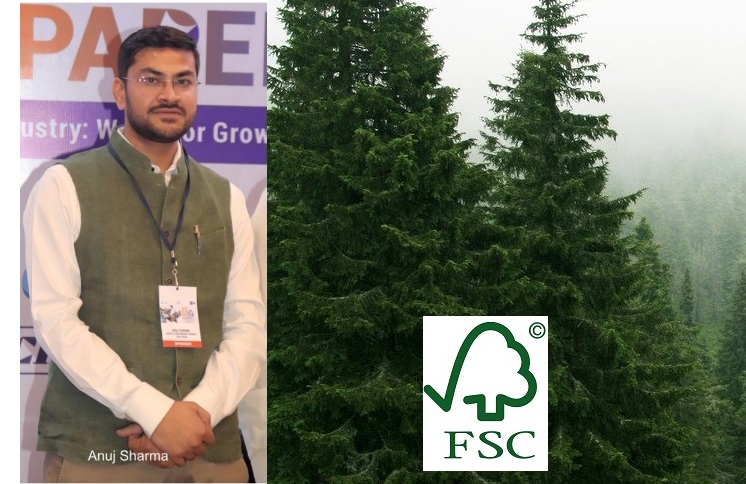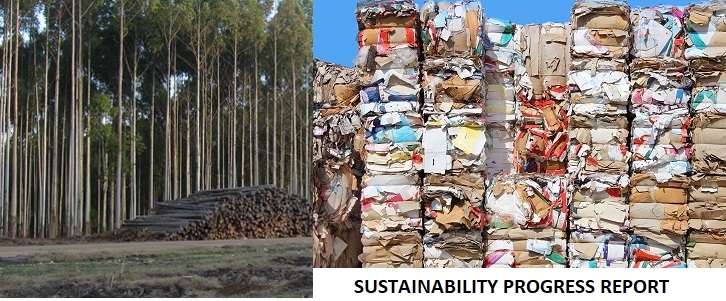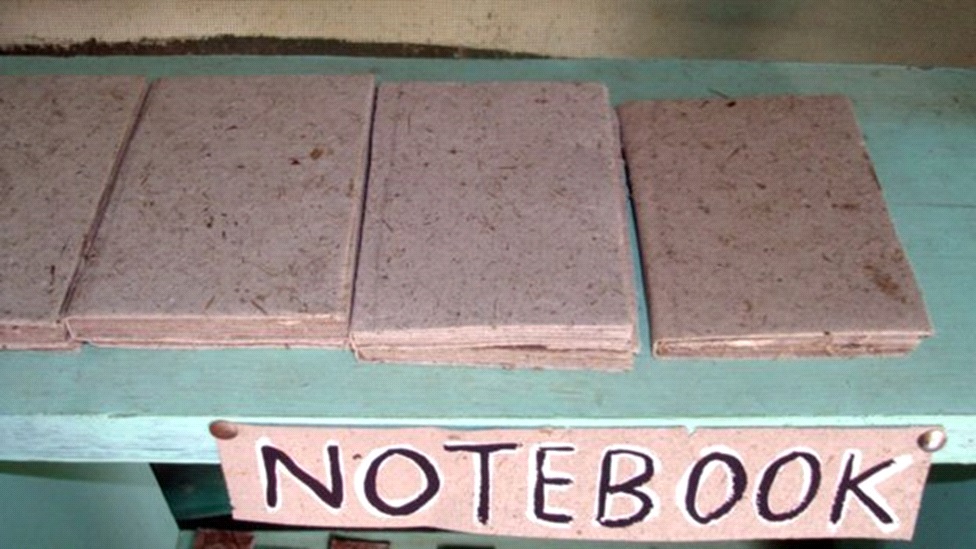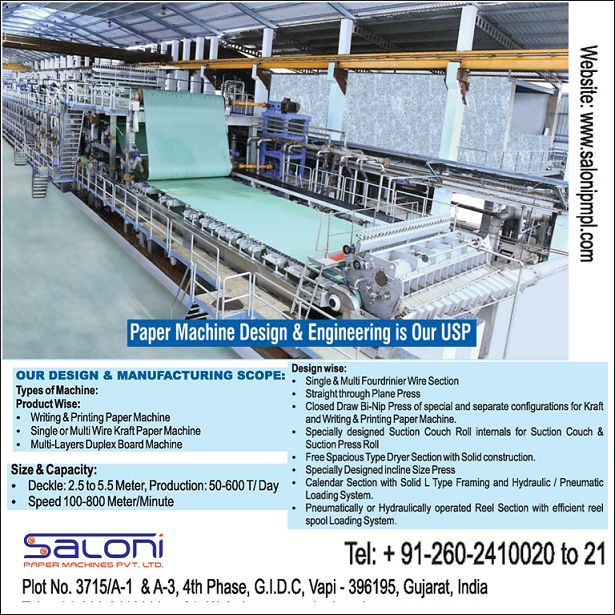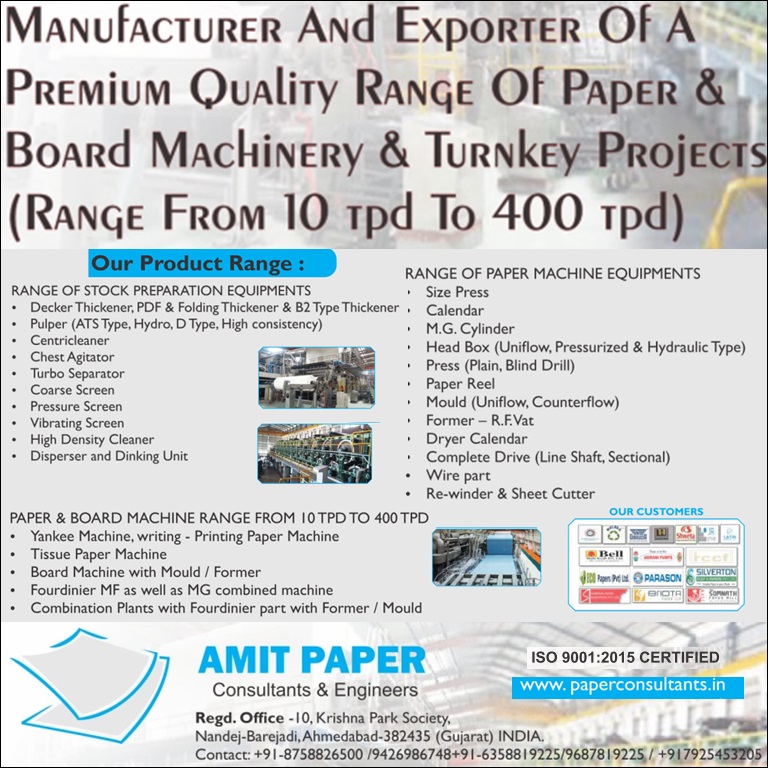PaperTech 2020 for making pulp and paper sector world class


PaperTech 2020 for making pulp and paper sector world class
Webinar | Hyderabad | 14 August, 2020:
The 14th edition of PaperTech organized by Confederation of Indian Industry (CII) and Indian Paper Manufacturers Association (IPMA) had several stakeholders and pioneers of the paper sector converging on a digital platform to deliberate on new challenges and opportunities.
Sanjay Singh, Chairman, PaperTech 2020 and former President of IPMA in his theme address, stated that PaperTech had added tremendous value to the pulp and paper sector over the years. Paper industry is on its way to become world class since energy and water consumption has been coming down. Paper industry plays a vital role in the overall industrial growth of the country and also provides a necessary medium to propel our knowledge-based economy forward.
One of the constraints being faced by the industry is availability of cost- effective raw material in the country. In India a lot of degraded forest land is available which, if replanted, will not only help in greening the country but can bring several other benefits to the economy.
Currently, the industry provides direct employment to 500,000 persons, and indirectly to around 1.5 million with Rs. 5,000 crores contribution to the exchequer. Some of the key drivers for growth are: greater emphasis on education and literacy by the government coupled with growth in organised retail and demand for better quality paper for writing and printing paper; better quality packaging of FMCG products marketed through organised retail; booming e-commerce, rising healthcare spends, over-the-counter medicines and increasing preference for ready-to-eat foods for paperboard / packaging paper.

In India an estimated 500,000 farmers are engaged in growing plantations of Eucalyptus/Subabul and about 1.2 million hectares have been brought under agro / farm forestry. This has generated significant employment opportunities for the local community, especially in the rural areas.
According to A S Mehta, President IPMA, the ongoing difficult times test the mettle and resolve of the industry. While it’s a long way to go for Indian companies to achieve the scale achieved by Chinese players, there are several other areas, besides scale, in which we are on our way to become globally competitive. Till few years ago, 200 cubic meters of water was being used to produce a tonne of paper. Now it has come down to 50 cubic metres and certain mills have brought it further down to less than 30 cubic metres which is a sterling achievement.
The industry needs to further collaborate with the farmers and work towards achieving lower cost of wood. Plantation exercise needs to be accelerated for raw material security. Aatma Nirbhar Bharat demands that the industry forges closer bonds with the entire value chain especially farmers and vendors to achieve global competitiveness.

Per capita paper consumption in India is currently around 14 kgs, while the global average is 57 kgs. Per capita paper consumption is projected to increase to at least 17 kgs by 2024-25. The demand for paper in India is growing at 6-7% per annum. India’s share in world production of paper is about 4%, with estimated production of over 17 million tonnes per annum (TPA).
The annual turnover of India’s Paper Industry is estimated to be INR 70,000 crores (domestic market size of INR 80,000 crores).
Due to the COVID-19 pandemic situation since March, both inward and outward supply chains of the Paper Industry have been totally disrupted, which are yet to fully recover. There has also been a severe demand compression due to the lockdown and closing down of educational institutes, commercial establishments and downstream printers, publishers, converters, stationery services, etc. Even after the lifting of the lockdown, the situation has not improved much with only a small pick-up in the demand.
Paper Industry is currently operating at less than 50% capacity utilisation due to the severe demand compression and cheap imports flooding into the country.
The Paper Industry is operating under extremely challenging conditions which have been compounded by substantial quantities of paper being imported into the country at significantly lower costs, especially under the aegis of the Free Trade Agreements (FTAs) like the India-ASEAN FTA and India-Korea CEPA, and other trade agreements like the Asia Pacific Trade Agreement (APTA), which includes China.

Web Title: PaperTech 2020 for making pulp and paper sector world class





 Join WhatsApp Group
Join WhatsApp Group Join Telegram Channel
Join Telegram Channel Join YouTube Channel
Join YouTube Channel Join Job Channel (View | Submit Jobs)
Join Job Channel (View | Submit Jobs) Join Buy Sell Channel (Free to Submit)
Join Buy Sell Channel (Free to Submit) Paper News Headlines Channel (Free to read)
Paper News Headlines Channel (Free to read)